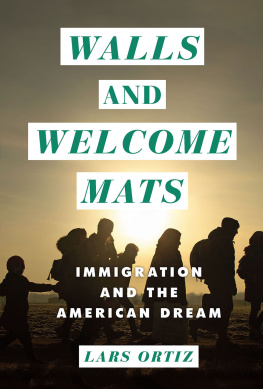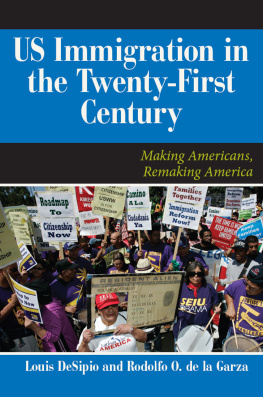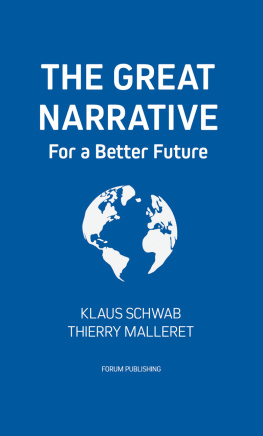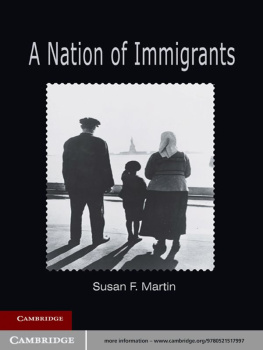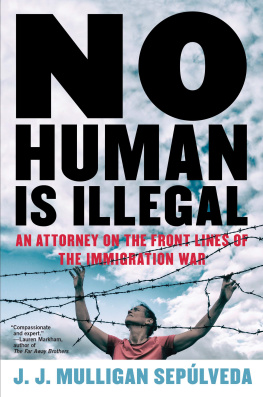Right to DREAM
Right to DREAM
Immigration Reform and Americas Future
William A. Schwab
The University of Arkansas Press
Fayetteville
2013
Cover photos: Top left and right: Luis Aguilar (left) and Rosa Velazquez (right) hold signs at a DREAM Act rally held in Fayetteville, Arkansas on May 17, 2012. The rally was organized by the Arkansas Coalition for DREAM, a United We DREAM affiliate and, along with other rallies held nationwide, directly contributed to President Obamas announcement on Deferred Action for Childhood Arrivals in June 2012. Bottom photo: Luis Martinez and Claudia Chavez of the Arkansas United Community Coalition at a rally calling for the cessation of mass deportation and separation of immigrant families. The rally was one of the events organized for a conference hosted by the Southeast Immigrant Rights Network in Raleigh, North Carolina on July 13, 2012. Photos by Mireya Reith. All photos provided courtesy of Arkansas United Community Coalition.
Copyright 2013 by The University of Arkansas Press
All rights reserved
Manufactured in the United States of America
ISBN-10: 1-55728-638-8
ISBN-13: 978-1-55728-638-3
e-ISBN: 978-1-61075-526-9
17 16 15 14 135 4 3 2 1
Library of Congress Control Number: 2013930787
For Americas 2.1 million undocumented youth, who dare to dream
Contents
So, you have decided to learn more about the DREAM Act. I cannot encourage you enough. The path that led me to support the DREAM Act began in May 2008 when the Arkansas Department of Higher Education advised Arkansas universities that offering in-state tuition to students who did not possess a social security number might violate federal law. Up to that point, if undocumented students graduated from an Arkansas high school and satisfied other academic requirements, they were permitted to enter the university and pay in-state tuition. Now, qualified students who grew up in Arkansas would be forced to pay almost $9,000 more a year in out-of-state tuition.
Investigation determined that the University of Arkansas, where I became chancellor in July 2008, had nineteen such undocumented students on campus. All of these students were faced with dropping out, effectively priced out of a college education. By supporting these undocumented students, however, we risked immediately alienating a vocal segment of university stakeholders who felt these students had no place in the university. Rather than pull out the rug from under these students, we decided to seek private funding to pay their increased tuition costs, which we soon secured. Unfortunately, this did not solve the problem for future students graduating from Arkansas high schools, with the grades and the desire to learn but not the social security numbers, who wanted to enter Arkansas colleges and universities as in-state students.
This episode awakened me to the often heartbreaking lives of undocumented students. It became increasingly clear to me what an impossible situation these young men and women were inmany of whom had been here most of their lives and spoke English with Arkansas accents. They not only had to pay more for college but had to do so without access to financial aid or legal employment, all but condemning them to an underclass existence.
I have also gotten to know several of these nineteen students and many more just like them. They are remarkable kidsintelligent, hard-working, highly motivated, and seeking the same opportunities to better their lives through higher education as the friends they grew up with. Clearly, they are being punished for the crimes of their parents. Their treatment is also a matter of bad public policy. It is a waste of human capital to ensure them access to K12 education but so completely frustrate their ability to access higher education, all but ensuring their permanent marginalization.
Ultimately, the events of 2008 made me want to learn more about what I could do to help the cause of immigration reform. One of the people I turned to was Bill Schwab, a sociology professor at the University of Arkansas whose research had taken him deep into this subject. Dr. Schwab has been my guide through the changing demographics of our region and has helped educate me on regional and national trends in immigration. He has also helped shape my thinking on the need for immigration reform, particularly the DREAM Act. As the University of Arkansas has striven to create awareness of this issue through various events, Dr. Schwab has been an invaluable resource in dissecting the issues, connecting us with outspoken DREAMers (like the ones profiled here), and providing insight into their lives.
Right to DREAM: Immigration Reform and Americas Future is a valuable and important resource in furthering the discussion I unexpectedly joined in 2008. I commend it to you without reservation and in the hopes that it will help shape the thinking of others on this critical issue. Our current immigration policy is clearly broken, and it wont be fixed until more Americans are aware of the issues and options involved.
This book is a great place to start.
G. David Gearhart, Chancellor
University of Arkansas
This book is my fourth. I began working on it in January 2012 and projected a six-month timeline. Like so much in life, other things intervenednew professional responsibilities, my work in Jordan, appreciating my wife and grandchildren, and dealing with the vagaries of life. Now that my work is at a close, I acknowledge those people who aided me along the way.
First, I thank Bob Haslam, the director of the University of Arkansas Quality Writing Center. Bob and I started working together on the Northwest Arkansas Hispanic Community Study in 2007. The relationship between an author and his or her editor is one of trusteditors are sometimes the bearers of bad news. I gave Bob a draft of my first two chapters in January 2012, and we met a few days later for coffee. He put the copy on the table, looked up at me, and said, Bill, I would love to take this course, but this book is not going to reach your audienceyoure writing to academics. Bob is committed to the success of our students and a supporter of the DREAM movement, so I knew that the book had to change. I started over. Thank you, Bob, for your hard work, editing, insightful comments, counsel, and support. It has been an honor working with you these past five years.
Thanks also go to Andy Albertson, a gifted writer and editor, for his comments and suggestions on the manuscript. You helped make this a better book.
Closer to home, thanks go to members of our campuss DREAM movementRaul Torres, Rocio Aguayo, and Rafael Garciawho helped frame this book. Special thanks go to Juan Mendez and Zessna Garcia for sharing their stories. Not to be overlooked are the nearly fifty DREAMers who shared their stories through interviews and biographies, as well as the hundreds of DREAMers who allowed me to observe their meetings and hear their stories, hopes, and dreams. I could not have written the book without them.
The University of Arkansas has a remarkable leader in Chancellor G. David Gearhart. His vision of a campus that reflects the diversity of our state is shown in his commitment to the passage of the DREAM Act and comprehensive immigration reform. Without him there would not have been the growth in our campuss diversity, the Undocumented: Living in the Shadows program in April 2012, or this book. Thank you for your support of this project and your commitment to the DREAM movement.
Special thanks go to Larry Malley, director and editor of The University of Arkansas Press, and Brian King, editorial and production director, for the production of this book. I am always amazed at the amount of behind-the-scenes work involved with a book project.



